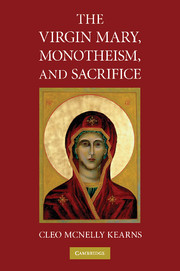Introduction: A Vehement Flame
Published online by Cambridge University Press: 27 July 2009
Summary
Whether holding her baby in her arms, standing alone near the cross or altar, or appearing in glory crowned with stars in heaven, the image of the Virgin Mary is widespread and immediately recognizable, even by many outside the Christian fold. Mary is invoked with reverence in a host of liturgies, spiritual writings, theological reflections, and literary studies, and her image is the object of devotions in a wide range of places, from private altars to public spaces, from natural grottoes to roadside shrines. Not only is she revered as one of the few women mentioned in the Qur'an, she is also increasingly invoked as a source of inspiration in the spiritual practices of other faiths, including Buddhism, Hinduism and a number of alternative spiritual formations and new religions as well. The parameters that govern the appearances of this figure in world religion are not, however, always very clear, nor is its meaning without problems and paradoxes.
Praised in the gospels as a faithful daughter of Zion, Mary is a highly contentious figure, to say the least, in Judaism, and while shebecomes in Eastern Orthodoxy and Roman Catholicism, the symbol par excellence of institutional high-church Christianity, Protestants have until recently largely downplayed her role. She is indeed celebrated in the Qur'an for her purity and her virginal conception of Jesus, yet the very basis on which she is there revered differs profoundly from that in Christianity, and in the history of Islam and its interactions with the West her role has been complex, sometimes unifying and sometimes highly divisive.
- Type
- Chapter
- Information
- The Virgin Mary, Monotheism and Sacrifice , pp. 1 - 20Publisher: Cambridge University PressPrint publication year: 2008

